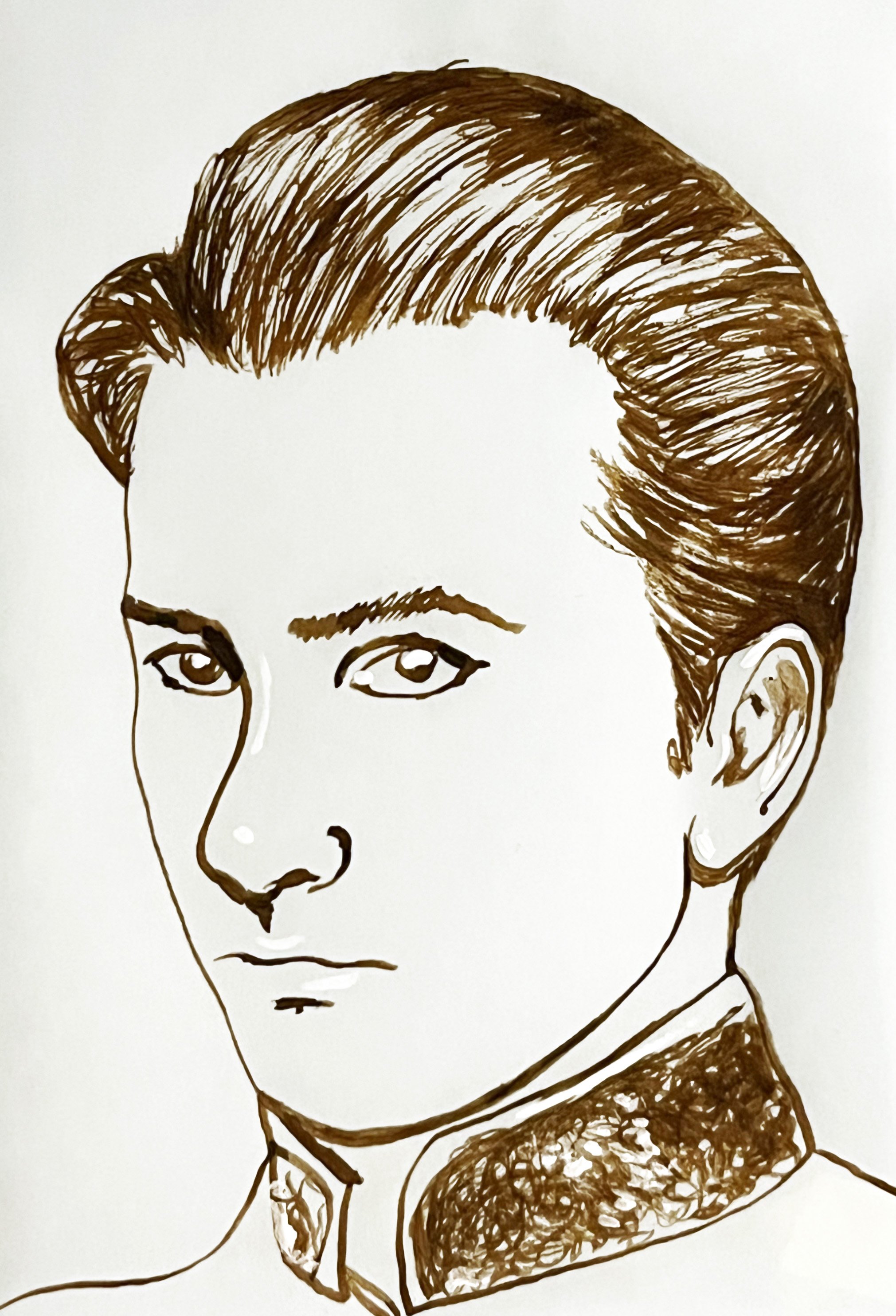Study of Venzell in Brown Ink, 2025. Brown ink and gouache on vellum, 4 x 6 in.
Lonesome Voyages was, alongside Ashes and Dust, going to have been an illustrated adventure game set in the world of Neith. Inspired by the COVID pandemic and Xavier de Maistre’s Voyage Around My Room, the game had two conceits: first, it took place in one setting, Venzell Andlauer Katzainer’s chambers in his family’s second home in the Zeelean Regency capital of Bardezant. Second, the player would have only controlled Venzell’s daydreams and fantasies. Every scene from the “real world” would have been non-interactive, scripted according to choices made by the player in the realm of fantasy.
“Is there anything more natural and more just than to put an end to it all, aided by someone who inadvertently treads on your toes, or drops some rather pointed remark in a moment of irritation occasioned by your thoughtlessness?”
After accidentally fighting a duel against a student theologian, Reinhilde, Venzell is sentenced by an Enshrinement rector to 40 passages of house arrest. Passing the time with daydreams inspired by his collection of art and books, Venzell’s solitary journey could have gone in several different directions. “Guiding” him is an entity called Marra that visits him in his sleep, suffocating him and taunting him about choices he might have made differently.





